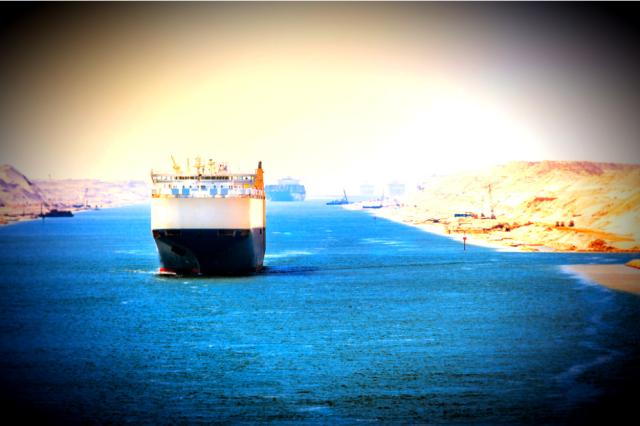
Ships passing through the eastern extension of the Suez Canal. (Source: Shutterstock.com)
Oil rose more than 2% on March 24 after a ship ran aground in the Suez Canal raising supply concerns, although fears of a slow recovery in demand due to European lockdowns limited gains.
The giant container ship that has been blocking the Suez Canal for more than a day has been partially refloated and traffic along the fastest shipping route from Europe to Asia is expected to resume soon, port agent GAC said on March 24.
“Price support is coming courtesy of a transport blockage,” said Stephen Brennock of oil broker PVM. “Yet market sentiment will likely struggle to shake off its newfound bearish trend.”
Brent crude rose $1.48, or 2.4%, to $62.27/bbl by 12:23 GMT, after tumbling 5.9% the previous day. WTI climbed $1.32, or 2.3%, to $59.08, having lost 6.2% on March 23.
“The potential disruption to supplies has lifted prices,” said Jeffrey Halley of brokerage OANDA, referring to the Suez incident. “The reprieve seems temporary, though.”
Oil has recovered from historic lows reached last year as OPEC and its allies made record output cuts. But both benchmarks touched their lowest since February on March 23, hit by worries over the pace of economic and demand recovery.
Italy, France and other European countries have re-imposed movement restrictions. But German Chancellor Angela Merkel said she was reversing a decision for a stricter Easter shutdown. Germany is Europe's biggest oil consumer.
Adding to downward pressure, U.S. crude oil inventories jumped by 2.9 million barrels last week, according to trading sources citing data from industry group the American Petroleum Institute.
The official U.S. supply report is due at 14:30 GMT from the Energy Information Administration. Analysts expect crude stocks to decline by about 300,000 barrels.
OPEC and its allies, known as OPEC+, meet on April 1 to consider whether to unwind more of their output cuts. Given the latest price drop, the prospect of further easing is “zero at this stage,” Halley of ONADA said.
Recommended Reading
What's Affecting Oil Prices This Week? (Feb. 5, 2024)
2024-02-05 - Stratas Advisors says the U.S.’ response (so far) to the recent attack on U.S. troops has been measured without direct confrontation of Iran, which reduces the possibility of oil flows being disrupted.
Global Oil Demand to Grow by 1.9 MMbbl/d in 2024, Says Wood Mac
2024-02-29 - Oil prices have found support this year from rising geopolitical tensions including attacks by the Iran-aligned Houthi group on Red Sea shipping.
Oil Rises After OPEC+ Extends Output Cuts
2024-03-04 - Rising geopolitical tensions due to the Israel-Hamas conflict and Houthi attacks on Red Sea shipping have supported oil prices in 2024, although concern about economic growth has weighed.
Oil Broadly Steady After Surprise US Crude Stock Drop
2024-03-21 - Stockpiles unexpectedly declined by 2 MMbbl to 445 MMbbl in the week ended March 15, as exports rose and refiners continued to increase activity.
What's Affecting Oil Prices This Week? (March 11, 2024)
2024-03-11 - Stratas Advisors expects oil prices to move higher in the middle of the year, but for the upcoming week, there is no impetus for prices to raise.


